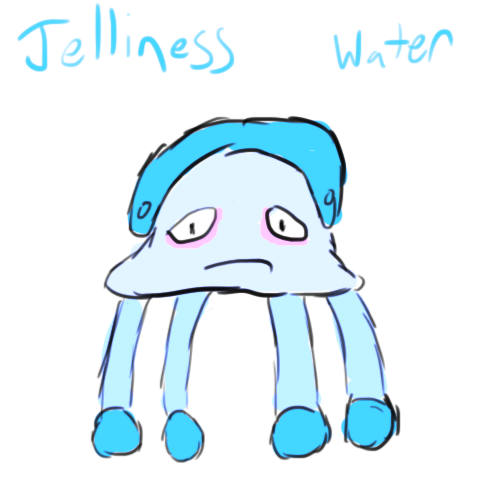[I'd appreciate speculation on stuff as I reveal it!]
After four hundred years of being closed off to the public, we are making history!
The Skugga Region proudly opens its doors!
What was once a strange farmland populated by Pokemon from other regions now has a gang of its own species. Most of them are distant descendants of Pokemon, though you wouldn't be able to tell.
Gene splicing mixed with breeding has created these Pokemon.
However, much like the "Alola Form" Pokemon of Alola, some of the Pokemon imported here from Johto, Hoenn, and Sinnoh have adapted.
We hope you look forward to booking a visit to Skugga.
(Out of character: I'm going to do periodic reveals like real pokemans, and then once the dex is completely revealed, I'll be doing a story about the game, of the same name.)
---
The first visitors to Skugga, Unovan Scientists, are amazed to be greeted by three new species of Pokemon!
Allow Skugga to personally reveal...
Shrubly - The Tiny-Bush Pokemon
Info: Shrubly often huddle together in packs. They arrange formations, much like hedges. When they find a spot to hunker down in, they stick their root-like feet into the earth, resting for weeks at a time. While it may appear that their eyes and teeth are pink, that is actually the inner workings of their bodies.
Type: Grass
Contrern - The Puppet Pokemon
Info: Contrern are friendly puppets, but you'd be foolish to put your hand in one! Their bodies burn far too hot to use. Some bring up the question as to how they can control themselves. Don't let yourself be fooled by their goofy eyes and floppy tongues, Contrern have been known to lash out at those mocking its looks.
Type: Fire
Jelliness - The Focused Jelly Pokemon
Info: Jelliness, unlike other Water Pokemon, don't float, they stay still. The padded flesh on their heads and tentacles weighs them greatly, which is why they don't move much. As more and more people visit the Skugga region, there are increasing reports of Jelliness raising their tentacles.
Type: Water

After four hundred years of being closed off to the public, we are making history!
The Skugga Region proudly opens its doors!
What was once a strange farmland populated by Pokemon from other regions now has a gang of its own species. Most of them are distant descendants of Pokemon, though you wouldn't be able to tell.
Gene splicing mixed with breeding has created these Pokemon.
However, much like the "Alola Form" Pokemon of Alola, some of the Pokemon imported here from Johto, Hoenn, and Sinnoh have adapted.
We hope you look forward to booking a visit to Skugga.
(Out of character: I'm going to do periodic reveals like real pokemans, and then once the dex is completely revealed, I'll be doing a story about the game, of the same name.)
---
The first visitors to Skugga, Unovan Scientists, are amazed to be greeted by three new species of Pokemon!
Allow Skugga to personally reveal...
Shrubly - The Tiny-Bush Pokemon
Info: Shrubly often huddle together in packs. They arrange formations, much like hedges. When they find a spot to hunker down in, they stick their root-like feet into the earth, resting for weeks at a time. While it may appear that their eyes and teeth are pink, that is actually the inner workings of their bodies.
Type: Grass
Contrern - The Puppet Pokemon
Info: Contrern are friendly puppets, but you'd be foolish to put your hand in one! Their bodies burn far too hot to use. Some bring up the question as to how they can control themselves. Don't let yourself be fooled by their goofy eyes and floppy tongues, Contrern have been known to lash out at those mocking its looks.
Type: Fire
Jelliness - The Focused Jelly Pokemon
Info: Jelliness, unlike other Water Pokemon, don't float, they stay still. The padded flesh on their heads and tentacles weighs them greatly, which is why they don't move much. As more and more people visit the Skugga region, there are increasing reports of Jelliness raising their tentacles.
Type: Water









